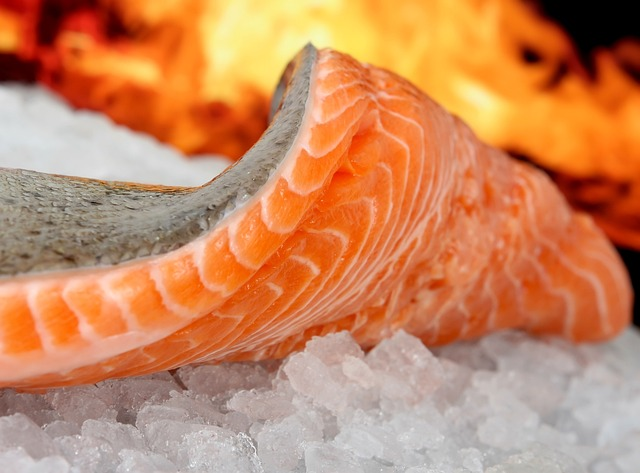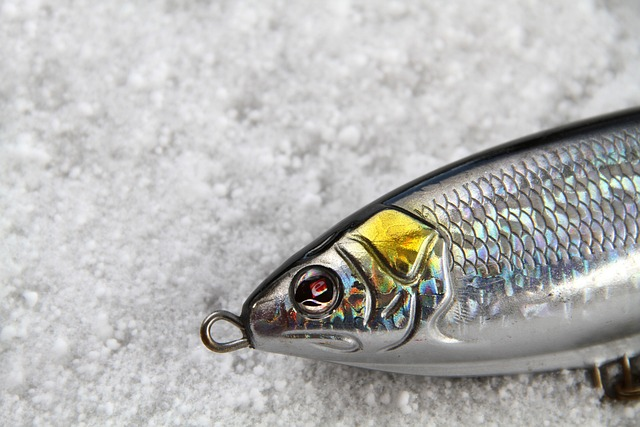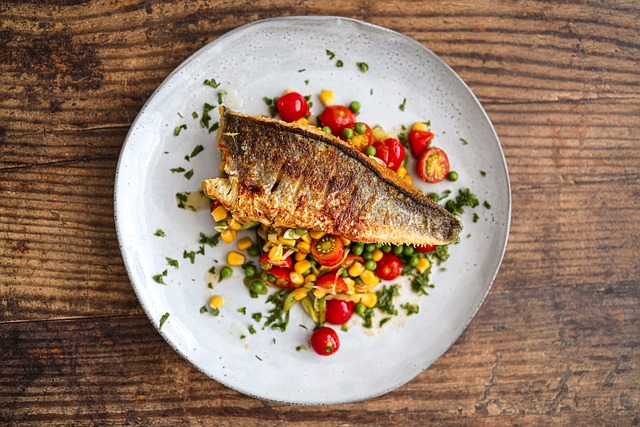Sea Bass Fishing
Fishing enthusiasts are constantly in search of new challenges and thrilling experiences, and black sea bass fishing offers just that. Whether you are an avid angler or a beginner looking for an exciting adventure, targeting black sea bass can provide an exhilarating and rewarding experience.
In this blog post, we will explore the world of black sea bass fishing, including what sea bass is, how and where to catch them, the best time for catching black sea bass, recommended lures and bait, essential gear, and some valuable tips to enhance your chances of success.

What Is a Sea Bass?
Before delving into the specifics of catching black sea bass, let’s start with some background information on these fish species. Sea bass, scientifically known as Centropristis striata, is a species of fish native to the coastal waters of the Atlantic Ocean, particularly along the eastern coast of North America. They are prized for their delicious taste and fighting spirit, making them a popular target for anglers.
Black sea bass possess a stout and muscular body, featuring a dark brown or blackish coloration with pale undersides. They can grow up to 20 inches in length and weigh over 5 pounds, providing anglers with a formidable opponent to reel in.
How to Fish for Black Sea Bass
When fishing for black sea bass, it’s important to use appropriate techniques to entice these cunning fish. Drop-shotting and jigging are two common methods employed by anglers to find black sea bass.
When targeting black sea bass, mastering the techniques of drop-shotting and jigging can significantly improve your chances of success. Here’s a more detailed explanation of these methods for catching black sea bass:
Drop-Shooting
Drop-shotting involves rigging a weight at the end of the line with a baited hook suspended above it. This setup allows the bait to hover just above the black sea bass, increasing the chances of a bite.
Steps for Drop-Shooting Black Sea Bass
Rigging
Start by attaching a weight, such as a sinker or a specialized drop-shot weight, at the end of your fishing line. The weight should be heavy enough to reach the desired depth but light enough to allow for subtle movement. Tie a hook to the line, typically using a Palomar knot, leaving a length of line between the weight and the hook.
Bait
Choose a bait that black sea bass find irresistible. Common options include squid, shrimp, clams, or small live fish. Thread the bait onto the hook, ensuring it hangs just above the sea floor when the line is taut.
Presentation
Lower your rig to the desired depth, allowing the bait to hover slightly above the sea bass. Maintain tension on the line while subtly shaking or twitching the rod tip to create enticing movements. This action will catch the attention of nearby fish and increase your chances of a bite.
Jigging
Jigging, on the other hand, involves bouncing a lure vertically off the bottom, imitating the movements of wounded prey. Varying your retrieve speed and incorporating pauses can often trigger strikes.
Steps for Jigging Black Sea Bass
Selection of Lures

Jigging relies on using lures that imitate wounded prey, such as small fish or crustaceans. Popular choices include bucktail jigs, soft plastic baits, or metal jigs. To catch black sea bass, opt for lures with colors and patterns that mimic the natural prey of black sea bass in your fishing area.
Technique
Lower your lure to the bottom, and then quickly raise and lower your rod tip in a rhythmic motion. This action causes the lure to move up and down, simulating the movements of an injured fish. Vary your retrieve speed, occasionally pausing or adding twitches to imitate erratic behavior. These irregular movements often trigger strikes from black sea bass.
Depth
Experiment with different depths to find where the black sea bass are feeding. Start by fishing near the bottom and gradually work your way up until you locate the most productive zone.
How and Where to Catch Black Sea Bass
Black sea bass are commonly found in coastal waters around rocky bottoms, wrecks, and reefs, making these areas ideal for targeting them. They prefer depths ranging from 20 to 120 feet, although they can occasionally be found in shallow water during certain seasons. To increase your chances of success, it’s recommended to focus your efforts near structures such as rock formations, wrecks, jetties, piers, and offshore reefs.
Best Time to Catch Black Sea Bass
The best time for black sea bass fishing is typically during the warmer months, from late spring and early summer through early autumn. As water temperatures rise, these fish become more active and move closer to the shore. Spring and fall tend to be particularly productive seasons, as the sea bass migrates to shallower water in search of food and suitable spawning grounds.
However, it’s worth noting that local conditions and regulations may vary, so it’s essential to consult local guides or authorities for the most up-to-date information on fishing seasons and limits in your area.
Best Black Sea Bass Lures
When it comes to lures for black sea bass, various options can prove effective. Jigs, bucktails, soft plastic baits, and metal spoons are popular choices for artificial baits among anglers. Opt for lures that mimic the natural prey of black sea bass. Brightly colored lures with reflective surfaces tend to attract their attention, especially in murky water conditions. Experimenting with different sizes, colors, and retrieval techniques can help you determine the most successful combination for the day.
Best Bait for Black Sea Bass
If you prefer using natural bait or fresh bait, there are several options that can attract black sea bass. Clams, crabs, squid, and cut bait are among the best baits. Rigging a hook with a strip of squid or a small piece of clam and casting it near structures or drop-offs can entice black sea bass to bite. It’s important to ensure the live bait is securely attached to withstand the fish’s strong strikes.
Best Fishing Gear to Catch Black Sea Bass
To maximize your chances of catching black sea bass successfully, it’s important to use the right fishing gear. A medium-weight rod or a conventional rod paired with a high-capacity reel is recommended. Choose a line with a test strength ranging from 20 to 40 pounds, as black sea bass are known for their powerful runs and the structure they tend to inhabit can cause line abrasion. Additionally, various terminal tackle, including weights, and swivels, will be necessary to adapt to different fishing conditions.
More Helpful Black Sea Bass Fishing Tips
Sea bass fishing can be an exciting and rewarding experience for anglers of all levels. Whether you’re a beginner or an experienced angler, these additional tips will enhance your black sea bass fishing experience:
Sensitivity and Line Control: Both drop-shotting and jigging benefit from using a sensitive rod and low-stretch fishing line. These features allow you to detect subtle bites and have better control over your presentation, regardless of the technique you choose.
Structure and Habitat: Understanding the preferred habitat and structure of black sea bass is crucial for both methods. Whether you’re drop-shotting or jigging, targeting areas with rocky bottoms, wrecks, or artificial reefs will increase your chances of encountering more fish.
Research Local Regulations: Before heading out on your fishing trip, it’s essential to research and understand the local fishing regulations and licensing requirements. This includes knowing the size and bag limits, as well as any specific rules or seasonal restrictions that may apply to sea bass fishing in your area. Compliance with these regulations is crucial for the conservation and sustainability of the fishery.
Use a Fishfinder: A fishfinder is a valuable tool to catch black sea bass. These devices use sonar technology to detect underwater structures, schools of fish, and changes in depth. Look for areas with rocky structures, wrecks, or drop-offs where sea bass tend to congregate. A fish finder can help you identify potential hotspots and increase your chances of finding active feeding grounds.
Pay Attention to Tidal Movements: Tidal movements play a significant role in sea bass behavior. These fish are known to be more active during certain tidal phases, such as the incoming and outgoing tides. Study the tidal charts for your fishing location and plan your fishing trips accordingly. Fishing during the optimal tidal windows can significantly increase your chances of hooking into a sea bass.
Stay Patient and Persistent: Sea bass can be finicky and challenging to catch at times. It’s important to stay patient and persistent when targeting these elusive fish. Experiment with different fishing techniques, lure presentations, and depths until you find what works best on a given day. Keep in mind that sea bass are aggressive fish, so be ready to react quickly when you feel a bite.
Practice Catch and Release: Sea bass populations can benefit greatly from catch and release practices. Consider releasing the fish you catch, especially big sea bass, to help maintain healthy fish stocks for future generations. Proper handling techniques, such as using barbless hooks and minimizing air exposure, can increase the chances of survival for released fish.

Conclusion
Sea bass fishing, particularly targeting black sea bass, offers anglers an exciting and challenging experience. Armed with the proper knowledge, gear, and techniques, you can increase your chances of success and enjoy the thrill when you catch black sea bass. Remember to adhere to local regulations and be mindful of conservation efforts to ensure the sustainability of black sea bass populations. So, grab your gear, head out to the waters, and embark on an unforgettable sea bass adventure.
